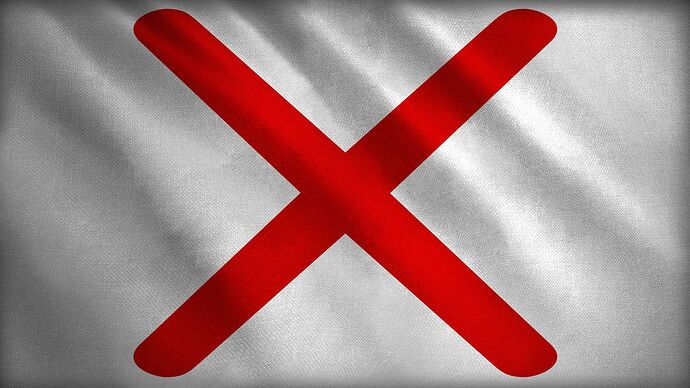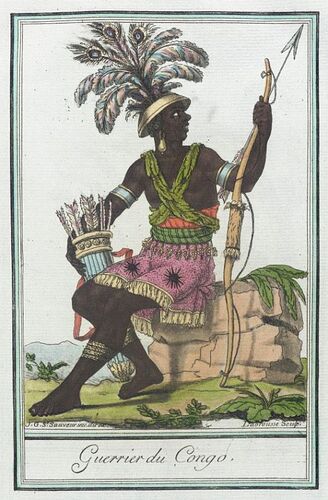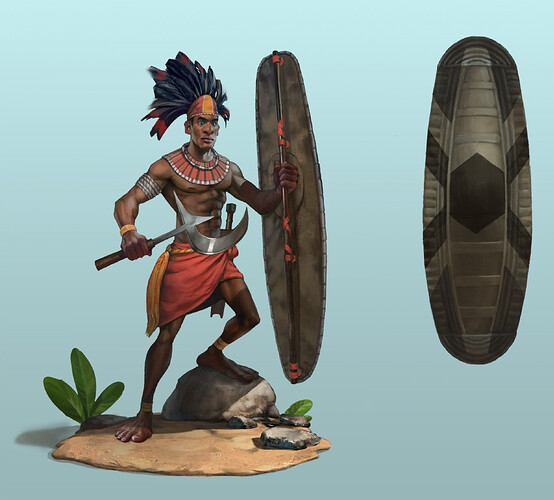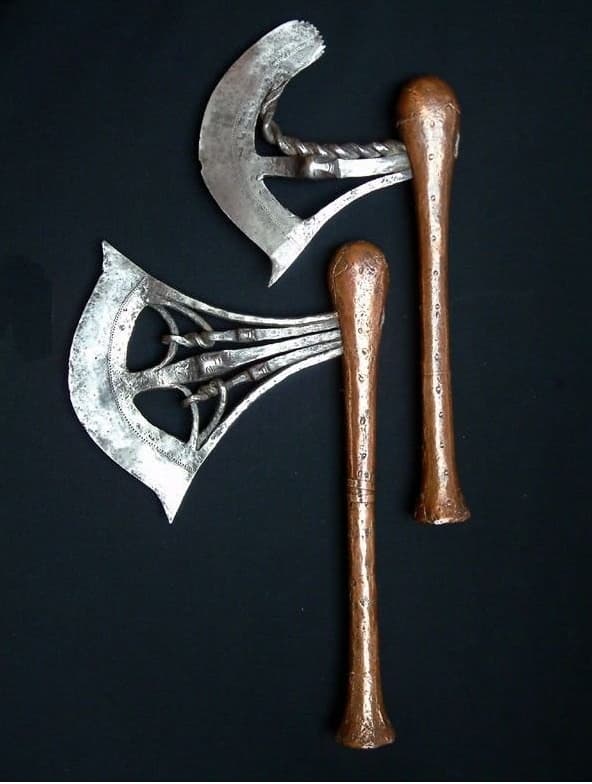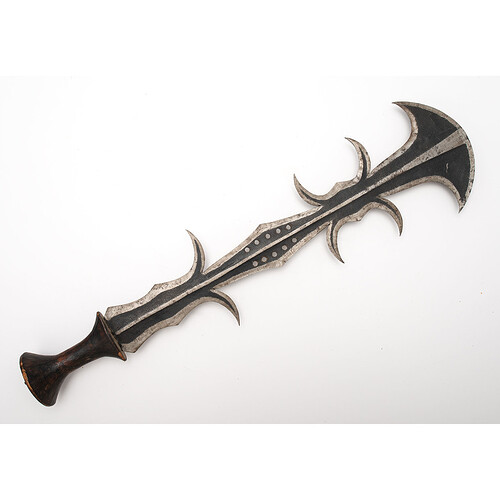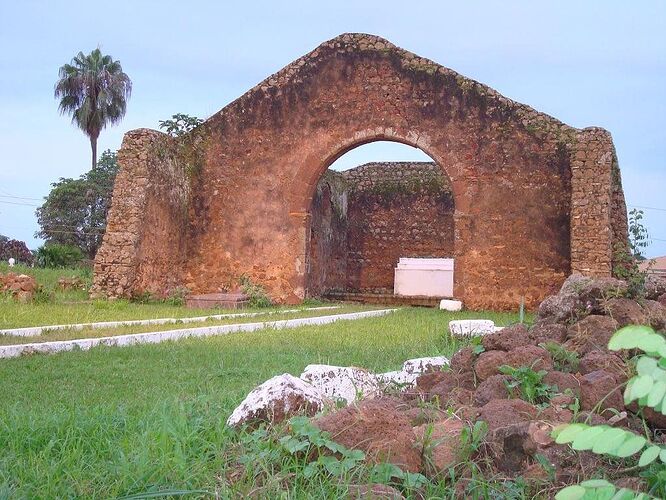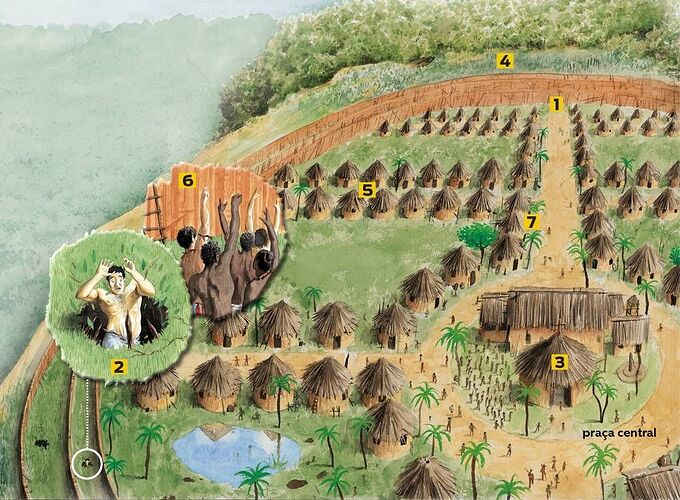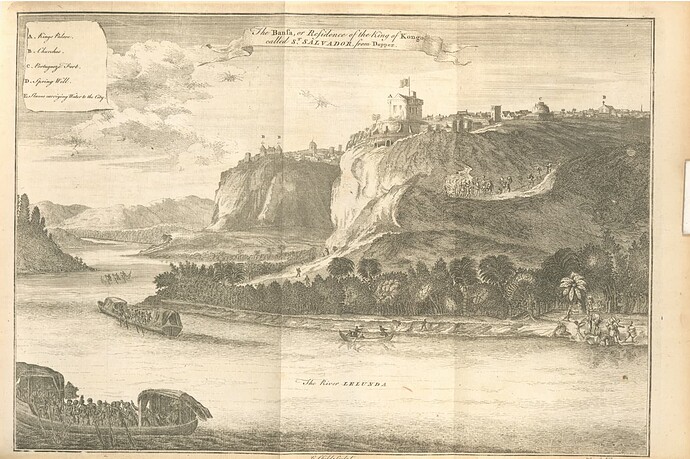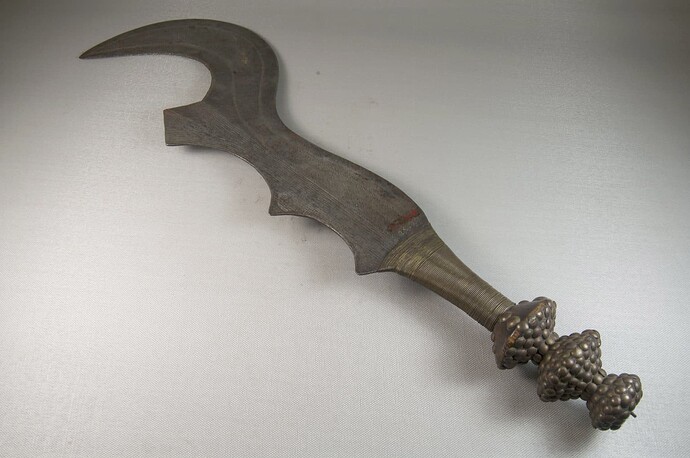Kingdom of Kongo
1390-1914
Emissaries, Convertion, Centralization
Difficulty: 2/3
Bonuses
• Town Centers can be upgraded Boosting its production and influence.
• Killing enemy villagers grants you 25 gold.
• Transport and Trade ships cost 50% less
• Unable to build additional Town Centers.
• Does not have access to Stables.
• Villagers are able to deconstruct non-defensive structures, returning the resources.
• Unique building: Embassy
• Unique building: Compounds (replaces Houses)
• Unique building: Town Hall (upgraded from Town Center)
• Unique building: City Hall (upgraded from Town Hall)
• Unique unit: Emissary (replaces Monk)
• Unique unit: Kimbaris (replaces Crossbows)
• Unique unit: Adegueiros (replaces Man at Arms)
• Unique unit: Pombo (replaces scout)
Centralized State: Landmark Town Center upgrades itself into a higher tier building depending on the amount of Non-military buildings built within it’s influence, boosting villager production speed, reducing food cost each tier and increasing the size of it’s Aura. It’s influence boosts the resource gathering rate of villagers, and research and production speed by 15% on buildings.
Centralization: 25 Non-Military Buildings connected to Town Center influence turns it into a Town Hall, 50 Buildings connected Turns it into a City Hall. (note: farms are included as a Non-military building)
Slave Armada: Wounded enemies below 30% has a low chance on converting into your units upon taking damage from Melee units. (This only applies to Kongolese units, not mercenaries or converted units)
Tse Tse Lands: All enemie cavalry within the Tse Tse land Aura suffers from Nagana debuff, which slows movement and attack speed of cavalry units by 7% for each level of the Town Center.
All buildings have a small radius of Tse Tse lands around them, while defensive structures, compounds and farms has a wider radius. (The way it spreads is similar to Zerg Creep from SC2, i.e borrowed idea from u/Chilly5)
Unique Landmarks
Feudal Age:
• Luanda shell midden : Produces passive gold income of 150 gold per minute. Which increases by 100% for each age up. (Age II – 50g/m, Age III – 100g/m, Age IV – 200g/m)
10% of Food dropped off from Shoreline fish also grants gold.
• Minkisi Hut: Doubles the amount of wood yield by nearby trees and boosts Pombo’s self healing when out of combat by +1 for each age.
Castle Age
· Mbanza Market: Enemie units who get killed has a chanse to become available in the market. Which can be traded in for either resources (with diminishing return, similar to buying resources off market), or alternatively be recruited for the value of the unit. The Market has a max capacity of total 20 units.
Note: Has unique upgrade: “Reavers”, units killed by Pombo’s will always become available at the market
• Cathedral of the Holy Saviour of Kongo: Produces Emissaries for half the cost and twice the production speed. Also grants unique upgrade for Emissaries.
Foundation : Allows Emissaries to build Embassies 30% cheaper.
Travel Companion: Emissaries now rides a horse and counted as a cavalry unit.
Well educated: Grants double the units from recruiting mercenary units from Neutral Markets.
Imperial Age:
• Fortress of São Miguel: Functions as a heavily fortified castle that comes with Bombard emplacement. Villagers can be traded into tickets which can be used to purchase various armies.
Docks now has ability to produce Carracks
Tickets slowly depletes over time.
Armies that can be purchased: Tercio Armada (5 Spearmen, 5 Handcannoners, 1 Bombard), Banderantes (6 Men at Arms, 6 crossbowmen), King’s Guards (6 knights, 1 scout)
• Quilombo: A landmark that functions as a towncenter, that automatically produces villagers for free. Once the Quilombo has been built, it is possible to build 2 more for the cost of 200 wood and 175 stone. Quilombo is able to garrison up to 20 units. All enemie units within the Quilombo Aura will damage over time slowly. (effect does not stack), and be under the Tse Tse land effect
Quilombo also comes with 2 abilities “War Party” ability which used will spawn Moroon Raiders wherever you have vision.
Moroon Raiders will grant food and wood from destroying farms and mills.
And “Maroon Spy Network” which briefly allows you to get vision on all military units on the minimap map. Both abilities has a shared cooldown and cost.
Note: Similar to Rus Militia, these units starts loosing 1 hit point per second until they remain at 1 hit point.
Wonder: The Bansa
Unique Buildings:
• Embassy (II, 300W): Can only be built by Emissaries, When build next to a Neutral Market or Friendly military production buildings, grants it access to produce their unique units for gold cost. (ex. Embassy attached to a French stables allows it to produce Royal Knights, attached to HRE barracks allows to to produce Landsknecht and Man at Arms, and so forth.
Limited to 2 Embassies (Age up increases limit by 1)
Note: The Gold cost equals the units total resource value. (i.e 100F 50G = 150G)
• Compounds (I, 125W): Doubles as House and Mill. Provides 20 population.
Note: Is much larger than a regular house, about the size of a Blacksmith building.
Unique Units:
• Pombo (I, 70F):
Scout infantry unit with fast movement speed, does bonus damage to Archers and has a “Pursuit” ability, granting it a temporary movement speed and damage against targets below 10% health by +6.
• Kimbaris (II, 60W 60G):
Elite Archer unit that does bonus damage to Heavy Armor and grants ranged attack speed bonus to nearby units. Has a “Snipe” ability, allowing it to deal a death blow to any targets below 10% health.
• Adegueiros (II, 100F 30G):
Heavy infantry with medium armor and fast movement speed, is able to pin down enemies moving out of it’s melee range, preventing them from being able to move for a short duration.
• Emissaries (II, 100G):
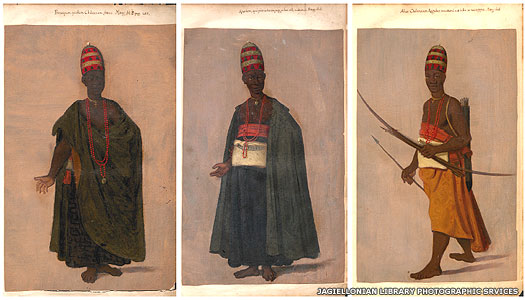
Emissaries can convert enemie production buildings, granting access to its units. This unit can be produced from Town Center or Religious buildings.
Each individual Emissary slowly generates Diplomacy points unique to that Emissary, which can be used to instantly buy units from the Neutral Market, spawning them next to the Emissary.
Note: Diplomacy Points has same value as Olive Oil cost.
Technologies
• Kikumba (II, 150F 100G): Military Units under rally (Moving to rally point from after production) moves 20% faster.
• Propeganda (II, 150F 250G): Emmisaries gains an buff ability that Grants a unit a unique permanent buff that allows their attacks to have a 15% chanse of converting the targeted unit. (4 minute cooldown) (unable to convert hero units, such as King, Khan and JD)
• Veteran Mercenaries (III, 300F 300G): Mercenary units gains their respective veterancy upgrade in addition to their unique upgrades. (available at Embassy)
• Travel Companion: (III, 150F 250G)
Emissaries now also count as cavalry and rides on a donkey, granting them significant amount of movement speed. (unique to Cathedral landmark)
• Foundation: (III, 200W, 300G) Emissaries can now construct Embassies 30% cheaper. (Unique to Cathedral landmark)
• Well Educated: (III, 500G) Emissaries now recruits 2 units instead of 1 from Neutral markets, for the same price. (Unique to Cathedral landmark)
• War Captives (III, 50F 125G): Pombo’s now grants 15 gold when dealing killing blow on units.
• Nzappa Zap Hatchets (III, 100F 250G):
Increases the range of Adeguiros ability to pin target by 2 tiles.
• Elite Mercenaries (IV, 500F 1000G): Mercenary units gain their respective elite upgrade in addition to their unique upgrades.
• Zombies (IV, 500F 250G): Small chance of lost units to re-appear outside Landmark TownCenter. (Unique to Quilombo)
• Konda Reavers (IV, 500F 500G):
Grants Konda a fancy new sword model, Unit’s killed by Pombos will always become available at at the Mbanza Market. (unique to Mbanza Market)
• Diplomacy (IV, 350F 650G): Embassies attached to Neutral Market allows production of those units at your own Military buildings. (Melee cavalry in barracks and Ranged cavalry in Archery Ranges).
Additional Notes:
Architecture :
The Architecture of the Kingdom of Kongo is definitely a showcase how the local architecture particularly adapted to the environment and the peoples way of life, would preceed over new and “modern” architectural styles. Before the arrival of the Europeans, the Kongolese would live in fenced in compounds, that would consist of several buildings for their daily needs. A kitchen would be a separate building from the sleeping quarters and there would be a building dedicated to the household animals as well. This seemed to be quite predominant among the regions with Bantu heritage, and it was no different for the Kingdom of Kongo.
Houses could be built of a variety of materials. Some were built of rammed earth and the walls whitewashed. Some could be built of wood. Others could be framed in wood, with walls thatched or made of woven panels. Interior partition walls could be made of woven cloth panels. Houses would have thatch roofs. Houses of elites could have courtyards and verandahs.
These compounds would have space set aside for gardens or livestock pens. So, the layout of the city of Mbanza Kongo would not be like that of a Portuguese city. There were stone walls that surrounded the Palace and Portuguese district, and larger “city walls” that protected the urban core. But the vast majority of households existed outside these city walls. Population density was much higher than any other portion of the Kongo kingdom, but Thornton also seems to imply that there was a lot of movement of households in the area surrounding the city. Settlement density could vary as land became exhausted by agriculture, or crises caused populations to move to more secure locations.
King Afonso I was constantly requesting the king of Portugal send masons and carpenters to Kongo kingdom to facilitate his building spree. By the end of Afonso I’s reign in 1545 there were Kongolese stonemasons who were able to repair and do upkeep on the city walls and work on churches.
While the Kongolese eventually abandoned the practice of building stone houses, however they continued to build the fences and walls around their compounds out of stone instead of wood.
So in case of the gameplay wise, this could easily be showcased as you age up, Stone buildings would become more common.
Certain structures such as Monastery and University would certainly be of Stone structure of Portuguese architectural style.
While Military buildings can reflect going from traditional Rammed earth and wood to stone structures. And the Compounds truly reflecting the architectural phases the Kingdom went through by starting off as traditional Rondavel houses surrounded by a wooden fence, into becoming more decorative and eventually into Stone in castle age, while in the Imperial age, they would revert back to being predominantly Rammed earth but retaining stone fences.
Naval units:
I could find very little to no info about the Kingdom’s navy.
But it wouldn’t be far fetches to imagine they were predominantly war canoes until the arrival of the Europeans.
And the Kingdom of Kongo would be using Portuguese ships predominantly when sending their Emissaries over to Europe. As well as there are records of the King of Kongo requestion and drafting the Portuguese navy to fight on his behalf against coastal kingdoms.
So for Ships, I would say a mix of Malian style ships alongside Galleys and late game Carracks.
Where Fishing, Arrow and Fireships are predominantly War Canoe style, while Trade, Springald and Carracks are of the Iberian (European) style.
Language progression:
The Kingdom of Kongo spoke the Kikongo language, based off the Bantu language. While it went through some changes as time passed on and in modern day split into todays Kikongo also known as Bakongo, but also its Creolized variants of Kituba, also known as Kikongo in the DRC administration. Confusing I know.
The Language is however quite well documented through history as funnily enough, the most people had access to basic Education funded by the King of Kongo. So there were infact a rather high literacy rate a mongs the Kongolese people during the golden age of the Kingdom.
Several missionaries as well as the local clergy recorded the language and made translations between Latin and Kikongo
Landmark references:
• Luanda Shell Midden:
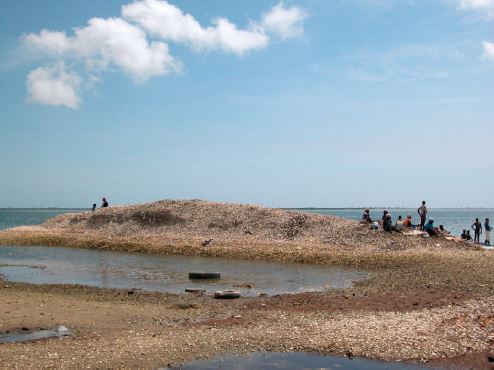
Conq shells, specifically from the Sparkling dwarf olive sea snails (Olivella nana), harvested from the Bay of Luanda were used as the common currency called Nzimbu in the Kingdom of Kongo and its surrounding states, and it was even traded as far north as to the Kingdom of Benin. The island of Luanda which is a spit off the coast of today’s modern Angola played a important role for the Kongolese economy. The Portoguese eventually colonized the island and used this knowledge to its advantage to strangle the economy of the already weakened Kingdom of Kongo after many years of both external and internal strife.
• Minkisi Hut:

Before the arrival of the Portuguese and Catholism that followed it, religious tradition was wildly different from Catholism. Carved wooden figures known as Minkisi were used by spiritual practitioners known as Nganga, to contain and channel the spirits of the ancestors. While their religion mostly focused on the eartly realm, the afterlife still remained important. As such the belief in ancestor and the power of minkisi persisted even after the convertion to Catholism, in such a way that the introduction of catholism and conversion was a Syncretic one, combining the 2 beliefs to fit the local customs. As such Jesus is often portrayed as a black man, aka origin of Black Jesus, and one can find many indigenous arts, crafting techniques and tradition. Especially noticeable on their crucifixes.
• Cathedral of the Holy Saviour of Congo:
Built in the 15th century in the former capital, M’banza Kongo, it was the first cathedral of the Diocese of Angola and Congo, the first Catholic cathedral in sub-Saharan Africa in today’s Angola.
Started out as a simple church which eventually got expanded into a Cathedral, established by King João 1. Of Kongo, and further repaired and expanded by Alfonso 1st. The church was burned down by the Jagas, got later sacked in the Kongo civil war, and the following battle against the Portuguese and eventually abandoned.
• Mbanza Market:
Slavery played a huge importance on the economy of the Kingdom of Kongo, while it was forbidden by the King of Kongo to take any residents of the Kingdom as slaves, it was common in the area that defeated tribes were often sold off as slaves.
With the assistance of the Portuguese and the weapons they brought with them, the Kingdom of Kongo consolidated power in the area capturing and expanding its territories and sent out expeditionary forces into the interior to in order to obtain more Slaves that could be sold off to the Europeans. It was also around this time that the expansions of especially Sugar plantations into the New World, and in Particularly Brazil which was a Portuguese colony, that the demand for slaves sky rocketed, and as such, the majority of the slaves that got imported into Brazil and much of the new world derived from the Kingdom of Kongo.
While it was forbidden to take the citizen of Kongo as slaves, it none the less happened due to the soaring demand pressured by the Portuguese that it became a major tension and conflict point between the Kingdom and the Portuguese, as the Portuguese would often just ignore it and hire mercenaries as well as sending their own raiding parties to capture Kongolese people.
• Fortress of São Miguel:
The Fortress of São Miguel was the Administrative center of the Portuguese colony established within the territory of Kingdom of Kongo after concessions from the Kongolese king asking for Portuguese assistance to fend off the Jaga Incursions that was causing havoc in the Kingdom. In return for their assistance they were given Territory at Luanda, which in turn would become the capital of todays Angola.
It became a major site for slave traffic that was exported to Brazil brought from the African interior, slaves were provided from the armies and states defeated by the Kingdom of Kongo, and later on notorious Portuguese known as Banderantes, which would frequently even capture Kongolese slaves, much to the dismay of the Kongolese King, as the people belonging to the Kingdom could not be enslaved. For many years the fort was a self-contained town protected by thick walls and cannons.
• Quilombo:
The word Quilombo derives from a Kongolese word meaning Military Encampment but were however large settlements found deep within the interior made from the Maroons who were escaped slaves. The word Maroon deriving from the Spanish word “Cimarrón” meaning Feral / Fugitive. These townships were highly functional, developing their own interior network, government, agricultural land and defences. Usually lead by a King. They would also often form War Parties, conducting raids on plantation, looting supplies and freeing other slaves.
One the biggest Quilombo was known as Palmares that was found in Brazil. Here a young Kongolese Princess Aqualtune who was sold into slavery after being captured by the Portuguese after the tragic loss of Battle of Mbwila, where king Antonio of kongo died in battle, and Princess Aqualtune commanded a entire wing of the Kongolese army.
She escaped slavery in Brazil along with her children and made it to Palmares Quilombo.
It also happened that this Quilombo happened to be primarily inhabited by Kongolese and Angolan people. But were also inhabited by escaped native American slaves, as well as a few white fugitives. And by the early 1670’s Aqualtune eldest son, was already considered the King of Palmares, known as King Ganga Zumba of Palmares. (however Nganga Nzumbi was a title carried by all kings)
Wonder:
• The Bansa:
The Bansa was the residence of the King of Kongo, after esetabelishing contact with the Portuguese and diplomatic relations with the Portuguese king, having converted to Catholisism and gained recognition from the Vatican.
The King personally requested Portugal to send it’s architects and masons to aid modernise the Capital and thus built several stone buildings in Portuguese style as well the Church and a Royal Palace for the king, noblemen and for Portuguese merchants settlings in the capital.
Sadly there is very little that remains other than various artist depiction of the time, from the era of how it used to look like.
Another factor that might have contributed to the further deterioration of the Palace and several of the stone architecture that was built, that further kings and nobles after the death of Afonso I, abandoned living in stone buildings, and preferred living in buildings and houses built in the Kongo Style.
Reasoning for this was that Kings and Nobles was traditionally constructed houses were light on constructions and could easily be abandoned, dismantled and rebuilt somewhere else, and both Nobles and Commoners would live in compound style housing consisting of several buildings surrounded by walls. Which was quite different than the side by side structures of European style housing.
Unique Building:
Embassy:
• Health: 450.
Compound:
• Health: 300
Town Hall:
• Health: 4500
Note: Villagers cost 45F to recruit and produces villagers 75% faster. (12s)
Garrison slots are increased by +5
City Hall:
• Health: 9500
Note: Villager cost is 40F to recruit and produces villagers 100% faster. (06s)
Garrison slots are increased by +5
Emissary:
• Health: 90
• Armor: 0
• Pierce Armor: 0
• Speed: 1.12 tiles/s, 0.9 tiles/s when carrying relic. (Travel Companion upgrade: 1.62 tiles/s, 1.215 tiles/s when carrying relic)
• Line of sight: 6.67
Note: Is able to construct embassies.
Kimbaris:
• Health: 80/90/100
• Attack: 6/8/9 Ranged (Bow), +5/+7+8 vs Heavy units
• Range: 6 tiles
• Rate of fire: 1.625s (Bow);
• Armor: 0
• Pierce Armor: 0
• Speed: 1.375 tiles/s
• Line of Sight: 8
• Ability: Snipe
Note: Has an active ability when used, is able to instantly kill a single unit below 10% health. Duration 10 seconds or until triggers on a unit, 30s cooldown after its duration runs out or ability has triggered.
Adegueiros:
• Health: 135/155/180
• Attack: 9/1/14 Melee (Sword)
• Rate of fire: 1.375
• Armor: 3/3/4
• Pierce Armor: 2/3/4
• Speed: 1.375 tiles/s
• Line of Sight: 8
Note: Enemy unit that is being attacked and moves out of Melee range, will get pinned, immobilizing the unit for a brief moment. Only able to trigger when the Unit has been targeted and is within melee strike range. 15s Cooldown. Think of “Pinned” being the same way Cavalry units get’s immobilized from spearmen “Brace” mechanic.
Pombos:
• Health: 110/125/155/180
• Attack: 8/9/11/13 Melee (Ngulu)
• Rate of Fire: 1.75s (Ngulu),
• Armor: 0
• Pierce Armor: 2/2/3/4
• Line of Sight: 9.11 tiles
• Speed: 1.5 tiles/s
• Ability: Pursuit
Note: Pursuit ability allows Pombo’s to chase after wounded enemies to finish them off, in a sort of Reverse charge effect, when activated they gain increased movement speed, and against enemies below 10% health, increased damage, making it easier to get last-hits on them, allowing it to synergize well with the Mbanza Market landmark.
Continued in post Below –
